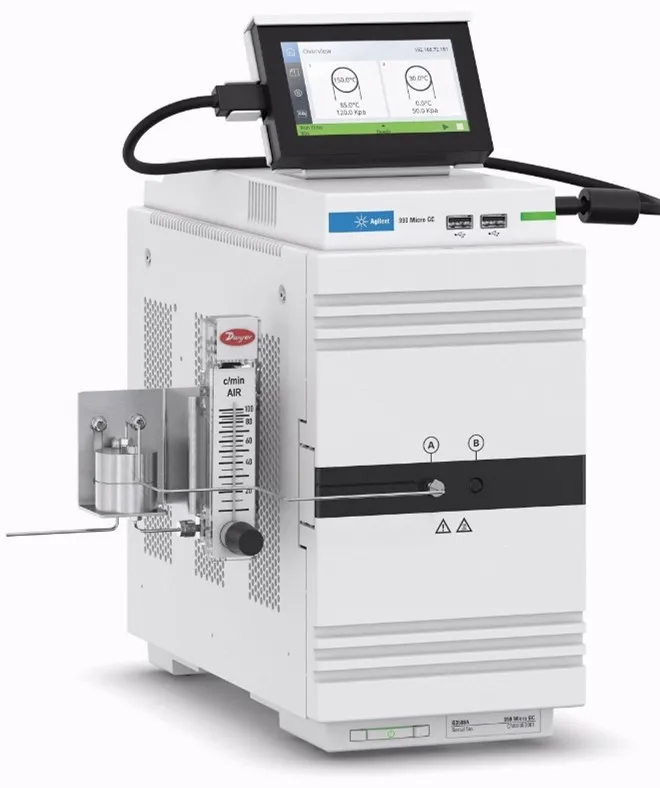Rock triaxial mechanical testing system – RTR Series
Instrument and equipment name: Rock triaxial mechanical testing system | |||
Model Specifications | RTR-1000 | National manufacturers | American GCTS Corporation |
Technical indicators: The maximum axial pressure is 1000KN, the maximum confining pressure is 140MPa, the pore pressure is 140MPa, the dynamic frequency is 10Hz, and the temperature is 150℃. The experimental control precision is: pressure: 0.01 MPa; liquid volume: 0.01 g/cm3; deformation: 0.001mm. | |||
Functional use: This system can complete the uniaxial and triaxial mechanical performance tests of rocks under normal temperature, high temperature, and high pressure conditions, and the uniaxial and triaxial deformation characteristics of rocks under cyclic conditions. | |||
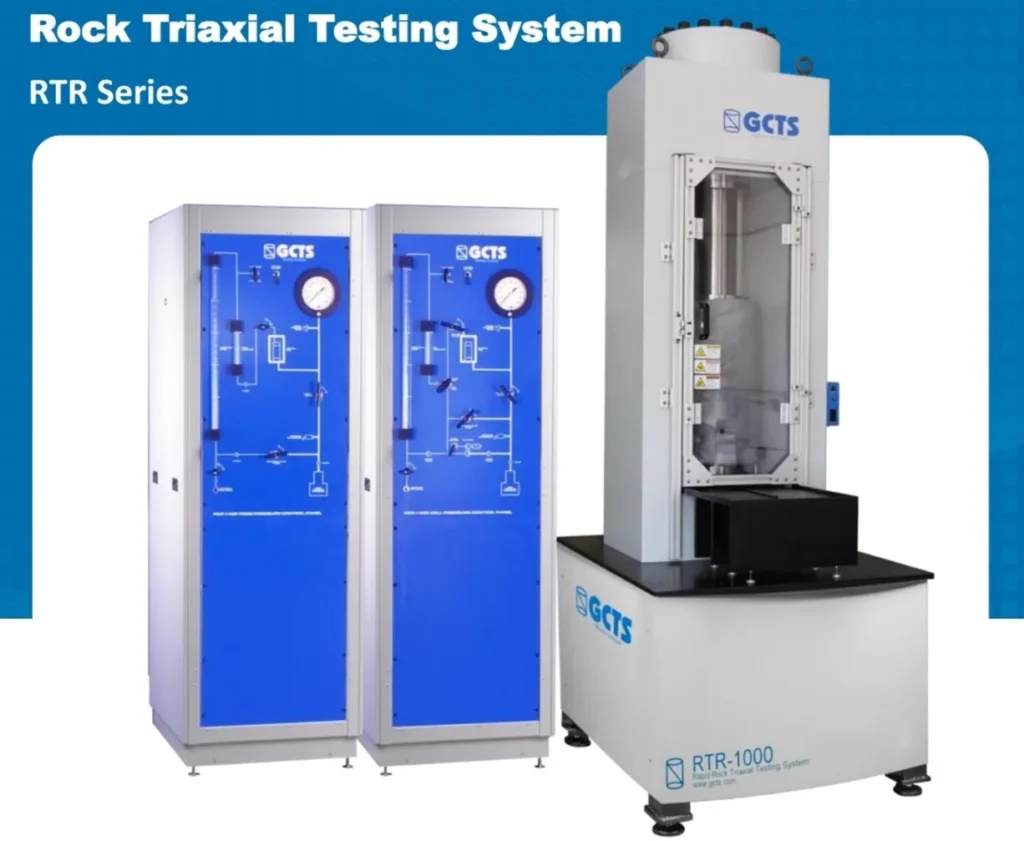
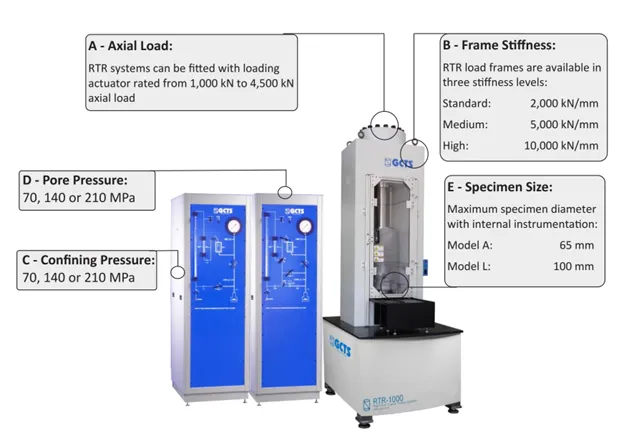
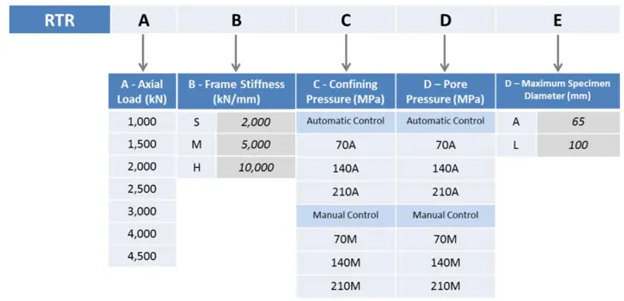
Ultrasonic (Acoustic) Velocity Measurement - ULT-100
Instrument and equipment name: Ultrasonic velocity measurement system | |||
Model Specifications | ULT-100 | National manufacturers | American GCTS Corporation |
Technical indicators : Signal Conditioning and Pulse Generation: – Digitally controlled pulser and receiver including anti-alias filter. – 20 MHz acquisition rate with 12 bit resolution digitizing board (with 8 ranges:156 kHz, 312 kHz, 625 kHz, 1.25 MHz, 2.5 MHz, 5 MHz, 10 MHz, and 20 MHz) – 10 MHz Bandwidth receiver. – User selectable pulse energy amplitude. – Pulse raise time less than 5 nano-seconds.
Computer Interface & Data Acquisition: – 8 analog inputs with 200 Hz anti-alias filter. – 12-bit resolution, ±10 volt, A/D data acquisition board (10 kHz sampling rate). – 2 D/A channels for P & S wave velocity output to an external acquisition or control system.
Ultrasonic Velocity & Data Acquisition Controller: – Micro-processor based digital signal processing and signal enhancement controller – wave form stacking – filtering – spectral analysis – Computer controlled selector switch for the automatic selection of P or S pulser and receiver transducers. – Automatic velocity calculation with the following methods: 1. Absolute threshold 2. Relative threshold of maximum amplitude 3. Relative threshold of first peak 4. First peak 5. Tangent of first peak | |||
Functional use : Laboratory ultrasonic velocity measurements are used to study the elastic behavior of geological materials at simulated in situ stress conditions. Ultrasonic testing is non-destructive and provides compression (P) wave and shear (S) wave velocity | |||

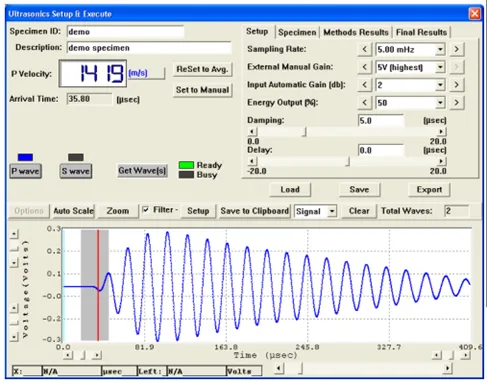
High Temperature and High Pressure Core Multi-parameter Measuring
Instrument and equipment name: High Temperature And High Pressure Core Multi-Parameter Measuring Instrument | |
Model Specifications | SCMS-B2 |
Technical indicators : – Experimental temperature: room temperature ~ 150 ℃, Error: 1 ℃ – Experimental pressure: 1 ~ 90Mpa, Error: 2Mpa – Core diameter: Ф 25mm – Core length: 3 ~ 6cm – Core loading and unloading time is less than 20 seconds- – Measuring range of gas porosity: 0.1 ~ 30PU, Error: 0.5PU – Gas permeability measurement range: 10-4 ~ 2000 ( 10-3µm2 ), Error: 15% – Resistivity measurement range: 1 ~ 1000 Ω•m, Error: 5% – Cumulative oil volume flow measurement range: 1 ~ 25ml, Error: 5% – Measuring range of accumulative water volume flow: 1 ~ 25ml, Error: 5% – Longitudinal wave measurement range: 150 ~ 1000µs/m, Error: 5% | |
Functional use: Combined measurement of gas porosity and gas permeability, core resistance increase coefficient, core longitudinal and transverse wave transit time, core skeleton sound velocity measurement, formation water resistivity measurement, displacement experiments of various treatment agents and high-viscosity crude oil, formation damage, oil-water dual Phase relative permeability curve measurement, irreducible water saturation, residual oil saturation, recovery factor measurement, total volume compression of core, and core pore compression coefficient measurement. | |
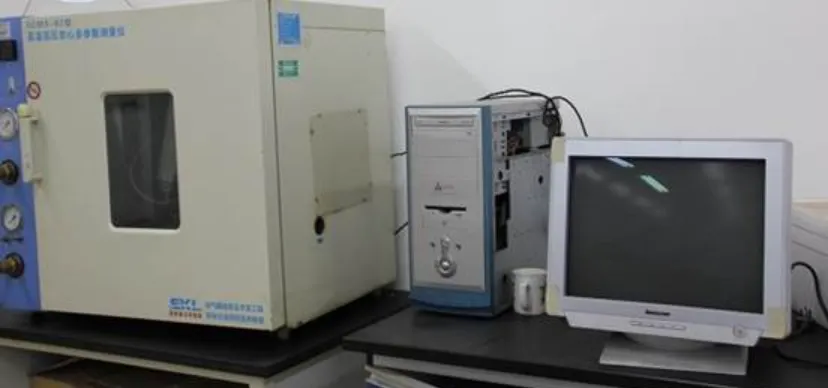
Physical Parameters of Natural Gas Hydrate and Rock Samples Measurement (Low Frequency)
Instrument and equipment name: Physical parameters of natural gas hydrate and rock samples measurement instrument |
Technical indicators: – Experimental temperature: -10 ~ 20 (room temperature)°C – Pore pressure: 0 ~ 40Mpa – Axial test pressure: 0 ~ 50Mpa – Core diameter: 60 (mm) – Core length: 0 ~ 60mm – Pressure vessel wall: 140 X 180 – Rock Sample Permeable Insulation Sleeve: 60 X 1 – Gas pressure control and measurement range: pressure 0 ~ 20MPa; Use the gas cylinder’s own pressure – Liquid pressure control and measurement range: pressure 0 ~ 40Mpa – Electrical resistance measurement range: 0.01 ~ 1000 Ω•m – Longitudinal wave measuring range: > 1000 m/s Shear wave measuring range: > 500 m/s – Axial deformation measurement: 0 ~ 1mm, resolution 1um – Radial deformation measurement: 0 ~ 1mm, resolution 1um |
Functional use: – Hydrate synthesis; – Changes in acoustic waves and resistance during hydrate synthesis and for rock samples; – Measurement of TDR dielectric constant during hydrate synthesis; – Electrical properties of rock samples e.g. conductivity (or, inversely, its resistivity), dielectric constant, and coefficients. – Measurement of heat conduction coefficient during hydrate synthesis and for rock samples; – Mechanical parameters during hydrate synthesis and for rock samples: axial and transverse deformation; – Upper repressure control and monitoring. |
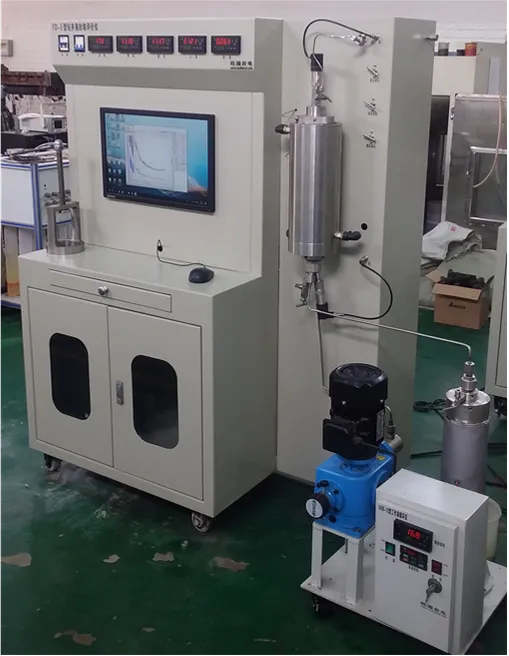
Large-sized MRI analyzer (Low field NMR core analysis system)
Instrument and equipment name: Large-sized rock core MRI analyzer The MacroMR12-150H-I is a MR analyzer and imaging system for larger size samples, combining outstanding features such as overall design, cavity flexibility, wide-range of applications, convenient handling, analysis and imaging integrated. |
Technical indicators: – Strength: 0.3T ± 0.03T – Direction: horizontal – Magnet shape: C type open – Uniform area: Ø150mm * H100mm – Requirements: ü diameter ≤150mm; length ≤100mm (normal temperature and pressure) ü 1 inch diameter core; length ≤80mm (high temperature and high pressure displacement) |
Functional use: – Reservoir property analysis: ü Porosity/Pore size distribution ü Oil/Water saturation ü Movable/Bound fluid saturation ü Permeability ü Wettability evaluation/Layered moisture content – Unconventional energy: ü Shale gas/CBM isothermal adsorption and desorption ü CO2 competitive adsorption experiment ü Natural gas hydrate formation/Decomposition ü Analysis of Gas-Water Two-Phase Dynamic Displacement ü Supercritical CO2 fracturing/Displacement gas – Oil and gas reservoir development evaluation: ü Quantitative testing and analysis of fracture development during fracturing ü On-line analysis of pore development during acidification ü Experimental analysis and evaluation of oil-water two-phase HTHP visual displacement experiment ü Analysis of online testing of polymer flooding and chemical flooding ü Analysis of microscopic pore-seepage parameters under load (confining pressure/water pressure) ü Triaxial compression damage analysis ü Process and characteristics analysis of imbibition – Evaluation of microstructure heterogeneity (spatial distribution of fluid); – Optional variable temperature and high voltage module: ü Option: Natural gas hydrate research (low temperature and high pressure simulation) ü Optional: Methane adsorption-analysis (high pressure gas test) ü Optional: Multi-dimensional NMR diffusion module ü Optional: Improve recovery factor / seepage mechanism (high temperature and high pressure simulation) |
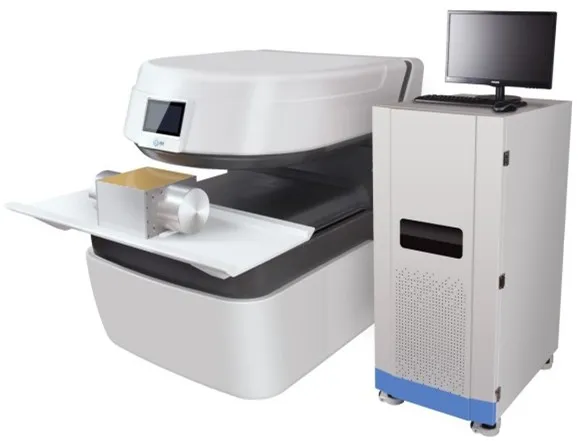
Medium-size MRI analyzer (Low field NMR core analysis system)
Instrument and equipment name: Medium-sized MRI analyzer, MesoMR series: 12/23MHz optional low temperature and high pressure module, other modules optional. |
Technical indicators: – Strength: 0.3 ± 0.03T / 0.5 ± 0.03T – Direction: horizontal / vertical – Size: ü diameter ≤60mm (normal temperature and pressure) ü diameter≤25.4mm (low temperature and high pressure) – Excellent low temperature and high pressure accessories to ensure a stable and reliable experimental environment ü Low temperature stable environment as low as -20℃, to ensure the stability and reliability of the sample environment |
Functional use: – Natural gas hydrate formation / decomposition process: ü Real-time monitoring of changes in the content of various substances in the reaction process ü Formation and Decomposition of Natural Gas Hydrate in Core under Low Temperature and High Pressure (Confining Pressure) ü Formation and decomposition of natural gas hydrates in sediments at low temperature and pressure ü Evaluation of Changes and Spatial Distribution of Sediment Water Content at Low Temperature – Analysis of Mechanism of Freezing and Thawing Soil Rocks: ü Detection of unfrozen water in soil ü Rock crack development at low temperature ü Soil pore size distribution – Physical properties analysis of conventional and dense core |
Advantage: – Two field strengths are available for a wide range of applications – Modular design, strong expansibility: ü Probes of various specifications ü Imaging visualization module ü Low temperature and high pressure module ü High temperature and high pressure module |
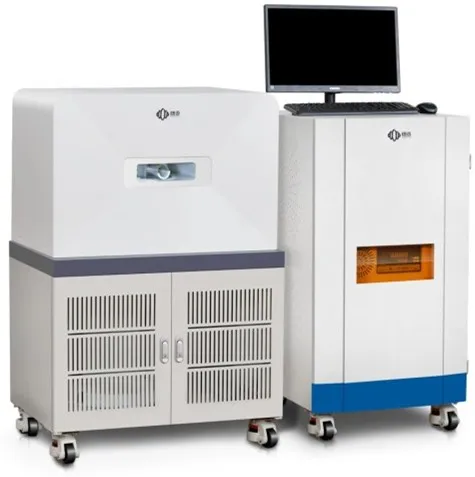
2MHz Rock Core NMR Analyzer Benchtop NMR MicroMR02-025V
Instrument and equipment name: 2MHz Rock core NMR Analyzer temperature/pressure module optional. |
Technical indicators: – Magnetic field frequency: 2MHz/12MHz/20MHz optional – Test range: ü Ø25.4mm*H60mm ü Ø38.1mm*H60mm – Porosity measurement accuracy: measurement range 1%~100%, accuracy relative error less than 5%, stability relative error less than 3% |
Functional use: – Conventional core porosity measurement – Conventional core permeability evaluation – Conventional core and shale pore size distribution testing – Conventional core pore structure and fluid saturation |
Advantage: – Fast, nondestructive, small and portable – A variety of field strengths are available, and two special probes are available. – Suitable for a wide range of core rock chips – High accuracy, good repeatability and stable performance of the instrument |

Phoenix Nanotom M
Instrument and equipment name: Phoenix Nanotom M 180 kV / 20 W X-ray nanoCT system |
Technical indicators: – Sample Size and Weight: The maximum sample size that the system can accommodate is 240 mm in diameter and 250 mm in height, with a weight limit of 3 kg (6.6 lbs.). – Minimum Voxel Size: The system achieves a minimum voxel size of 300 nm, providing high-resolution 3D imaging. – Detail detectability: Down to 200 nm (0.2 microns) – Sample travel length: Y / Z 250 mm / 400 mm – Rotation: 0° – 360° x n |
Functional use: – High-resolution analysis and 3D metrology – Industrial and Scientific Inspection: The Phoenix Nanotom M is employed as a powerful inspection tool for various industrial and scientific applications. |
Advantage: – Non-destructive Structure and Failure Analysis: It is used for analyzing structures and identifying failure points without causing damage to the objects being inspected. – Quality Assurance and Production Control: The device aids in ensuring product quality and controlling production processes. – Precision Mechanics: The Phoenix Nanotom M incorporates precision mechanics for accurate and reliable measurements. – Advanced Software Modules: The device is equipped with advanced software modules that enable various analysis possibilities. – Three-Dimensional CT Information: The CT scans provide fully three-dimensional information, allowing non-destructive visualization of slices and arbitrary sectional views. – Automatic Pore Analysis: The device can automatically analyze pores in objects, facilitating defect detection. – Precise 3D Measurements: It allows for precise and reproducible 3D measurements of complex objects. – Rapid Inspection Reports: The device can generate first article inspection reports within an hour, streamlining the inspection process. – Complex Part Measurement: High-resolution CT is suitable for measuring complex parts with intricate geometries. – Hidden Surfaces: It can measure surfaces that are hidden from direct view or challenging to access. – Superior to Conventional CMMs: CT offers significant advantages over conventional tactile or optical coordinate measuring machines (CMMs) for such applications. – High-Resolution Imaging: The CT system offers extremely high image quality, thanks to a temperature-stabilized DXR detector with a resolution of 3,072 x 2,400 pixels and a high dynamic range (>10,000:1). – High-Power Nanofocus X-ray Tube: The system incorporates a new 180 kV / 20 W high-power nanofocus X-ray tube, enabling detail detectability down to 200 nm and optimized for long-term stability. – Wide Sample Range: It provides high spatial and contrast resolution for a wide range of sample sizes, covering three orders of magnitude from 0.25 mm to 250 mm in size, suitable for small to medium-sized plastic samples. – 3D Measurement Package: The system includes an optimized 3D measurement package that ensures stable acquisition conditions, fast reconstruction within minutes, and reproducible measurement results. – Diamond|window Technology: The system utilizes Diamond|window for enhanced focal spot stability and up to 2 times faster data acquisition while maintaining high image quality. – User-Friendly Design: The system is designed for optimized ease of use, aided by the advanced Phoenix Datos|x CT software. |
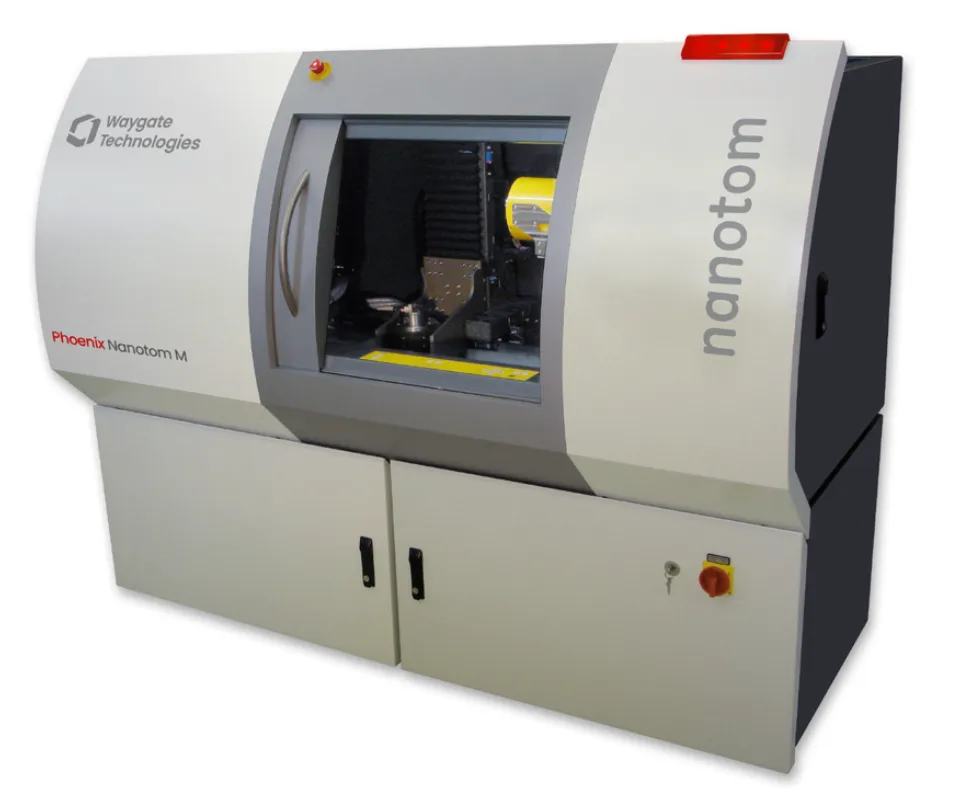
ImaCore 3017™ – 3D Rock Core Imager
Instrument and equipment name: Cryogen Free MRI – ImaCore 3017™ |
Technical indicators: – Sample Size: ü Maximum Diameter 100mm ü Maximum Length 70mm – Water Supply: 7 litres/min. minimum – Imaging pulse sequences: ü 2D spiral SE-SPI ü 2D spiral SPRITE ü 3D conical SE-SPI ü 3D conical SPRITE ü 1D SE-SPI and SPRITE profiles ü 1D spatial T1 ü 1D spatial T1-T2 Maps ü 1D spatial T2 ü 2D spatial T2 ü Spiral 2D Fast Spin Echo Ultra Short TE ü Conical 3D Fast Spin Echo (FSE) ü Out of volume suppression for long cores or 1D profiles ü Slice selection for T2 |
Functional use: – Rock Core Analysis: The ImaCore system is optimized for analyzing rock cores, providing insights into the pore network and fluid distribution within the rock. – High-Resolution Imaging: The system utilizes higher field MRI instrumentation to overcome resolution limitations, enabling the visualization of actual images of fluids in the rock for a better understanding of the pore network. |
Advantage: – High-Resolution Imaging: The ImaCore system utilizes higher field MRI instrumentation, which significantly enhances the image resolution. This means researchers can obtain detailed and clear images of the fluid distribution within the rock cores. With higher resolution, it becomes easier to identify and study intricate pore structures, providing valuable insights into the rock’s properties. – Comprehensive Core Analysis: The ImaCore system is specifically optimized for core analysis. It comes equipped with dedicated hardware and pulse sequences tailored for both standard and advanced core analysis techniques. Researchers can perform a wide range of experiments and investigations on rock cores to gather valuable data for reservoir characterization and exploration. – Customizable Pulse Sequences: The GIT Systems 3D Imaging software bundled with the ImaCore allows researchers to develop their own pulse sequences. This level of customization enables them to tailor the MRI experiments according to their specific research requirements. It empowers researchers to explore novel techniques and expand the scope of their studies. – Wide Field Strength Range: The adjustable field strength of 0.1 to 3T provides the flexibility to perform various experiments. Researchers can conduct standard hydrogen experiments at different frequencies, or combine field strength and probe frequency to measure other nuclei like Fluorine (19F), Carbon (13C), and Sodium (23Na). This versatility broadens the spectrum of possible applications. – Cryogen-Free Variable Field Magnet: The stable, cryogen-free magnet offers a significant advantage in terms of usability and maintenance. Cryogen-free systems eliminate the need for expensive and cumbersome cryogens, making the instrument easier to operate and maintain while reducing operating costs. – Quick and Easy Imaging: ImaCore allows users to obtain high-resolution 3D images of fluid in the rock samples quickly and easily. The imaging process takes only seconds, saving valuable time compared to traditional methods that might require hours or days for similar results. – Versatile Sample Size Handling: The ImaCore system accommodates various sample sizes, including standard 1″ or 1.5″ core plugs and full-diameter cores. This flexibility allows researchers to analyze a wide range of rock core samples, making the system suitable for a diverse set of applications. – Long Core Studies and Flow Studies: The large dimensions of the ImaCore 3017 magnet enable researchers to conduct long-term core studies, observing changes over extended periods. Additionally, the system supports flow studies using flow cells within the instrument, enabling dynamic analysis of fluid flow within the rock cores. – Real-Time Flow Front Viewing: The high temporal resolution achievable with the higher field strength allows researchers to view the flow front in real time. This capability provides valuable information about fluid displacement, distribution, and movement within the rock cores, offering insights into fluid dynamics during different processes. – Multi-Angle Measurements: The ImaCore magnet is mounted on a rotating housing, enabling measurements to be performed at various orientations. This feature allows researchers to investigate the anisotropic properties of rock cores, which can have a significant impact on fluid flow and storage behavior. |
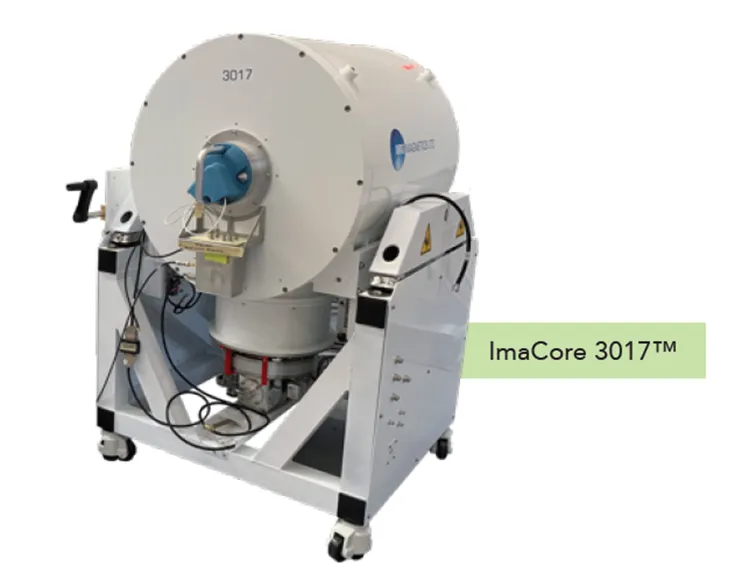
Nanoporosity by NMR
Instrument and equipment name: Nanoporosity by NMR |
Technical indicators: – Magnet type: permanent magnet; – Magnetic field intensity: 0.28± 0.05 T; – Probe size: 12 mm; – Effective sample detection area:Ø 10mm×H 20mm; |
Functional use: – Nanoporosity Analysis: The NMRC is designed specifically for nanoporosity analysis, making it a valuable tool for studying and characterizing materials with pores in the nanometer range (4 nm to > 1 μm). It provides detailed information about the pore size distribution within the sample. – Pore Size Determination: The NMRC uses the relationship between pore size and freezing point depression to determine the size of the pores in the material. This allows researchers and engineers to understand the pore structure and assess its impact on the material’s properties. – Phase Transition Monitoring: The equipment can monitor phase transitions in the sample material. By observing changes in freezing points and associated parameters, researchers can gain insights into the behavior of fluids within the nanoporous material. |
Advantage: – Accurate sample temperature control from -30 °C to room temperature ± 0.1 °C resolution – Easy to use software with automated sample analysis and result generation – Minimum operating costs with permanent NMR magnet – High stability NMR system with a flexible operating environment |
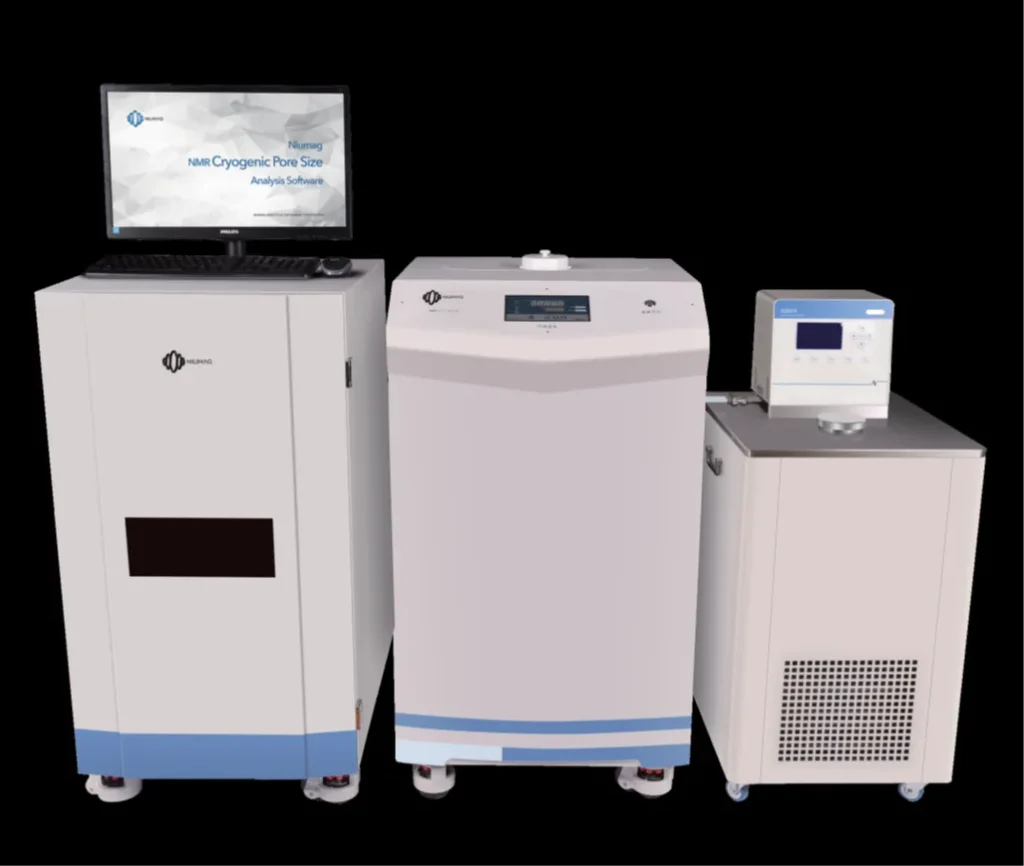
Universal analytical Schottky VP FE-SEM
Instrument and equipment name: New Schottky FE-SEM, SU5000 |
Technical indicators: – Electron Source: Schottky emitter with a 3-year working life warranty – Probe Current: Up to 200 nA (stable analysis, even in low vacuum) – Specimen Chamber: Large analytical chamber with a fully retractable draw-out stage – Optional Mode: Low-vacuum mode up to 300 Pa |
Functional use: – Industrial Analytical Work: R&D, failure analysis, quality assurance, technical cleanliness – University Research: Especially in material science and life sciences |
Advantage: – Robust and User-Friendly: The SU5000 is a sturdy and easy-to-use device, suitable for various applications in both industry and research settings. – High-Contrast Imaging: Utilizing a Schottky electron source, the system offers high-contrast imaging for precise analysis. – Safe Working with Specimens: The electron optics do not interact with the specimen, allowing safe handling of magnetizable and electrostatically charged samples. – Large Analytical Chamber: The device is equipped with a spacious specimen chamber, accommodating a fully retractable draw-out stage for ease of use. – Optional Low-Vacuum Mode: The system provides a low-vacuum mode up to 300 Pa, accessible with a single mouse click, for additional versatility in specimen analysis. – High-Performance Detection System: The SU5000 comes with a high-performance detection system, including SE (secondary electron) and multizonal backscattered electron detectors. Additionally, optional low-vacuum SE and in-lens detectors are available. – Wide Range of Accessories: The system offers a broad selection of accessories, such as heating, cooling, cryo, 3View, STEM, EDX, WDX, EBSD, SECOM, CL, Raman, and plasma cleaner, enhancing its functionality and versatility. |
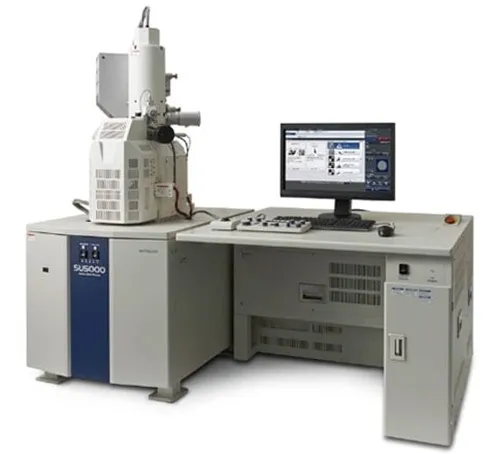
High-resolution analytical Schottky VP FE-SEM
Instrument and equipment name: High-resolution analytical Schottky VP FE-SEM |
Technical indicators: – Electron Source: Schottky electron source with a 3-year working life warranty – Probe Current: Up to 200 nA (also available in low vacuum up to 300 Pa) – Electron Optics: Internal combined electrostatic (booster) and magnetic beam guide without magnetic interaction with the specimen – Resolution: Sub-nanometer resolution, even with magnetizable or electrostatically charged specimens – Signal Channels: 6 parallel signal channels with detectors and EDX available at 6 mm working distance – Specimen Chamber: Large analytical chamber with a fully retractable draw-out specimen stage – Sample Size: Samples up to 200 mm diameter, 80 mm height, and 2 kg weight can be accommodated |
Functional use: – High-Resolution SEM Imaging: The SU7000 provides high-resolution SEM imaging suitable for demanding industrial and research applications. – Simultaneous Signal Capture: It allows simultaneous capture of various signal types, making it ideal for comprehensive analysis on magnetic specimens and other materials. – Analytical Working: The system supports analytical working with a wide range of optional accessories for in-depth material characterization. |
Advantage: – High-Quality Electron Source: The Schottky electron source with a 3-year warranty ensures reliable performance and high-resolution imaging capabilities. – Versatile Probe Current: The system offers up to 200 nA probe current, suitable for various imaging and analytical applications. – Enhanced Electron Optics: The internal combined electrostatic and magnetic beam guide enables sub-nanometer resolution even with challenging specimens, such as magnetizable and electrostatically charged samples. – Multiple Signal Channels: The SU7000 comes with 6 parallel signal channels, allowing simultaneous detection and analysis of different signals. – Large Analytical Chamber: The system features a spacious specimen chamber with a fully retractable draw-out stage, accommodating larger samples for analysis. – Comprehensive Signal Detection: The detection system includes various detectors, EDX, and a new multi-zonal rapid backscattered electron detector, enabling versatile analysis capabilities. – Easy Access to Low-Vacuum Mode: The system can be easily switched to low vacuum up to 300 Pa with just a click, expanding its capabilities for different sample types. – Wide Range of Optional Accessories: The equipment offers a variety of optional accessories, such as heating, cooling, cryo, EDX, WDX, EBSD, CL, and free macro programming in Python with EM-Macro, enhancing its functionality and adaptability to different research and industrial needs. |
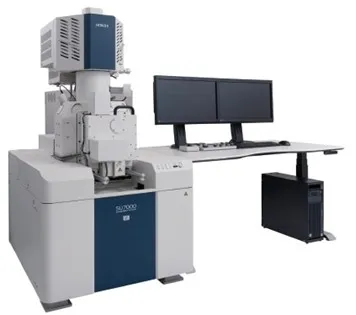
Regulus field emission SEM family
Instrument and equipment name: Regulus Series Ultra-high Resolution Scanning Electron Microscope |
Technical indicators: – Product Family: Regulus field emission SEM – Electron Source: Stable cold field emission source with a 10-year working life – Probe Current: Continuously adjustable probe current up to 20 nA without a monochromator limiting the probe current – Immersion Lens: Immersion lens with dual energy-filtered in-lens detection system – Working Distance: Very short working distances from 4 mm – Energy Range: The entire beam energy range up to 30 kV – EDX Systems: Compatible with special analytical accessories such as the windowless Oxford Extreme EDX system and the Bruker FlatQuad EDX detector – Specimen Exchange Chamber: Equipped with a specimen exchange chamber for maintaining the best vacuum conditions |
Functional use: – High-Resolution Imaging: The Regulus FE-SEMs provide superior resolution, making them suitable for imaging-oriented applications that require precise and detailed imaging. – Signal Separation and Energy Filtering: The equipment offers flexible signal separation and energy filtering even at the lowest beam energies, enhancing analytical capabilities. – Special EDX Analysis: The Regulus FE-SEMs support special EDX analysis, allowing for light element analysis and maximum signal efficiency using compatible analytical accessories. – Versatile Instrumentation: The Regulus family includes multiple models with different capabilities, making it suitable for various applications ranging from basic imaging (SU8100) to high-performance analysis (SU8220 and SU8230) and applications requiring exact stage navigation (SU8240). |
Advantage: – Long Working Life: The cold field emitter source has a 10-year working life, providing reliable and stable performance over an extended period. – High Resolution: The advanced stable cold field emission source ensures high-resolution imaging for demanding applications. – Flexible Signal Detection: Up to 4 signals can be displayed in parallel, providing flexibility in signal detection and analysis. – Excellent Analytical Performance: The Regulus FE-SEMs, when combined with special analytical accessories like the windowless Oxford Extreme EDX system and the Bruker FlatQuad EDX detector, deliver outstanding analytical performance in material analysis. – Versatile Expansions: The equipment can be flexibly expanded with additional accessories, tailoring the system to specific research and analytical needs. – Optimal Vacuum Conditions: The specimen exchange chamber maintains the best vacuum conditions for accurate and reliable imaging and analysis. – Free Macro Programming: The Regulus FE-SEMs support free macro programming in Python with EM-Macro, enabling researchers to automate and customize analytical processes. |
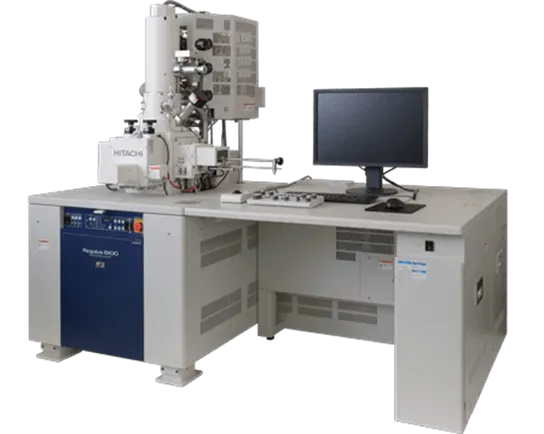
SU9000 true-inlens FE-SEM & STEM
Instrument and equipment name: SU9000 true-inlens FE-SEM & STEM |
Technical indicators: – Electron Source: Cold field emitter with a 10-year working life – Imaging Resolution: SEM-STEM combination with ≤ 3 Å transmission electron (TE) resolution – Scanning-Transmission Electron Microscope (STEM): Allows near-atomic-level analysis of intrinsic structures – Energy-Filtered Detection System: Two-step energy-filtered detection system available for SEM imaging, expandable with a retractable backscattered electron detector – EDX Detector: Windowless EDX detector with up to 0.7 sr solid angle for EDX analysis – Transmission Mode: Enables selective detection of signals according to scattering angle (BF, ABF, ADF, and HAADF) with a lattice resolution below 3 Å – Diffraction Imaging: Retractable diffraction camera for displaying diffraction images (FFT) for directional alignment of the specimen – Electron Energy Loss Spectroscopy (EELS): Optional in-house EELS system for EELS and light element distribution imaging |
Functional use: – High-Resolution SEM Imaging: The SU9000 provides high-resolution SEM imaging for surface analysis of various materials. – Scanning-Transmission Electron Microscopy (STEM): Allows near-atomic-level analysis of intrinsic structures, providing detailed information on materials’ internal features. – Energy-Filtered Detection: The equipment offers a two-step energy-filtered detection system for SEM imaging, which can be expanded with additional detectors for enhanced analysis capabilities. – EDX Analysis: The windowless EDX detector allows for energy-dispersive X-ray analysis, enabling the determination of elemental composition in the sample. – Transmission Mode Analysis: In transmission mode, the system selectively detects signals based on scattering angles, providing insights into material structures. – Diffraction Imaging: The retractable diffraction camera enables the display of diffraction images for directional alignment and analysis of the specimen. – Electron Energy Loss Spectroscopy (EELS): The optional in-house EELS system allows researchers to study electron energy loss spectra and obtain light element distribution images. |
Advantage: – High Resolving Power: The SU9000 offers extremely high resolving power for detailed analysis of intrinsic structures and surface imaging. – Versatile Detector Options: With a range of detectors available, including EDX, BF-STEM, and diffraction cameras, the system offers versatile analysis capabilities. – Stable Electron Source: The cold field emitter provides stable electron emission and has a 10-year working life, ensuring consistent and reliable performance. – Simultaneous Imaging and Analysis: The system allows simultaneous imaging and analysis, enabling researchers to obtain comprehensive data in a single experiment. – Optimum Light Element Analysis: The equipment is optimized for light element analysis, making it suitable for various applications in catalysts, semiconductors, low-dimensional light element structures, and life sciences fields. |
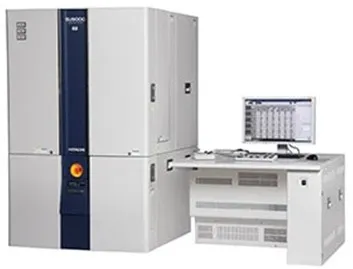
Thermo Scientific Flash Smart Elemental Analyzer (EA)
Instrument and equipment name: Thermo Scientific Flash Smart EA: THE Elemental Analyzer |
Details: The Thermo Scientific FlashSmart (formerly the FLASH 2000) is the perfect fit between innovation and tradition. As a modern and compact analyzer designed for unattended and fully automated operation in Nitrogen through CHNS/O modes in any type of sample, FlashSmart is a simple, precise and cost-effective tool for any laboratory. The ability to switch from CHN or CHNS to Oxygen without powering down to reconfigure, excellent accuracy and reproducibility and ease of use are the most visible results of the technological innovations packaged into this analyzer.
FlashSmart offers a wide range of solutions supporting different analytical requirements. The analyzer is available in various configurations; however, the simplicity of the instrument layout and the continuous flow design make it possible to modify the analyzer at any time to accommodate the most diverse market applications.
|
The main Ability: · 24/7 automated operation · Determine 1 to 5 Elements · Multivalve Control Module for extended capabilities · TOC determinations after acid pretreatment · 1000 Analysis Kit for every configuration in standard outfit · Analyze from few ppm, to 100% |
Access more applications: Food Safety, Agronomy/Marine Science, Environmental, Material Characterization, Organic Chemistry, Pharmaceuticals, Petro-Chemistry and Energy. § Petro-chemistry & Energy: Coals – Cokes – Crude oils – Gasoline/Diesel – Alternative fuels – Petroleum derivates – Lubricants – Oil additives – Graphite. Tools: FlashSmart CHNS – FlashSmart CHNS/O – FlashSmart N Lubricants. § Organic Chemistry & Pharmaceuticals: Fine chemicals – Pharmaceuticals products – Organo-metallic compounds – Polymers – Plastic – Synthetic rubbers – Fibers – Explosives – Catalysts – Textiles – Pesticides – Detergents – Fluorine-compounds. Tools: FlashSmart CHN -FlashSmart CHN/O – FlashSmart CHNS – FlashSmart CHNS/O. CHNS/O Analyzer Configuration: Perform 5 elements with TCD, and trace sulfur determination with the Flame Photometric Detector (FPD). § Environmental: Soils, sediments, and rocks – Composts – Wastes – Sewage/Sludge – Pesticides – Water solution – Waste water – Particulates in air by filters – Particulates in water by filters – Woods. Tools: FlashSmart CHNS – FlashSmart CHNS/O – FlashSmart NCS – FlashSmart NC So NCS Analyzer Configuration: Achieve nitrogen, carbon and sulfur determination by TCD detector and trace sulfur determination with a flame photometric detector. NC Soil Configuration: Determination of Total Nitrogen, Total Carbon, and Total Organic Carbon. |
Featured Benefits:
|
Other Capabilities and Features: · Instantly connect: – Thermal Conductivity Detector (TCD) – Flame Photometric Detector (FPD) for trace sulfur analysis – Isotope Ratio Mass Spectrometer (IRMS). · Sample introduction modularity: – Two solid autosamplers – Two liquid autosamplers – One solid and one liquid autosampler – One solid autosampler and one manual liquid sampler. · Carrier gas options: – Helium – Argon option for lower cost and regular supply – Switch to nitrogen or argon when in Stand-By Mode. · Gas chromatographic method: real-time analysis: – Proper quantification of the five elements – “Open window” function giving information on what is happening inside the analyzer in real-time – Straightforward and intuitive workflow without valves – No absorption or desorption of gases needed. · Software: The Thermo Scientific EagerSmart Data Handling Software allows you to leave the FlashSmart EA unattended to get completed analysis, with full, user-friendly reports. The software controls all analytical parameters, flows, autosamplers and detectors, by suggesting the most favorable analytical conditions for your samples. |
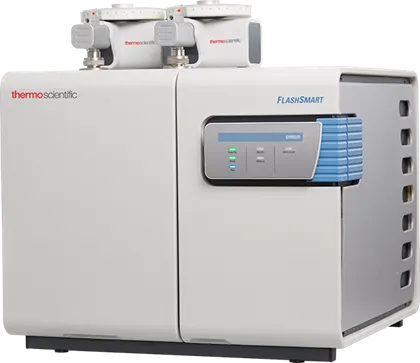
Carl Zeiss polarization microscopes
Instrument and equipment name: Carl Zeiss polarization microscopes: Axio Scope and Axio Imager microscopes |
Functional use: 1. Traditional Fields:
2. Modern Industries:
3. Research and Materialography:
|
Features: 1. Versatility for Various Applications:
2. Temperature-Resistant Polarizer Module:
3. Comprehensive Contrasting Techniques:
|
Advantages: 1. Future-Proof and Upgradeable:
2. Optimal Image Quality and Performance:
3. Versatile Solutions for Diverse Applications:
|
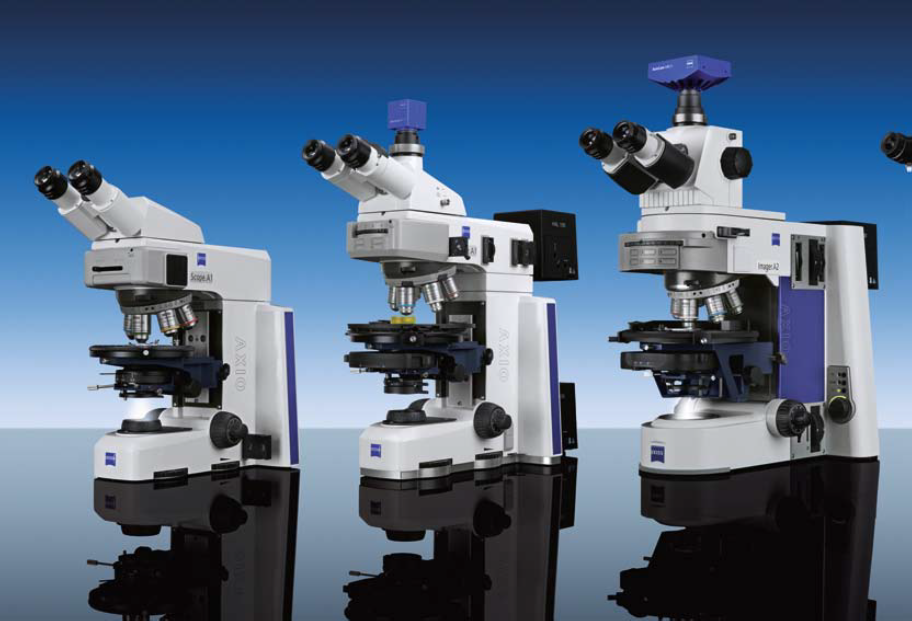
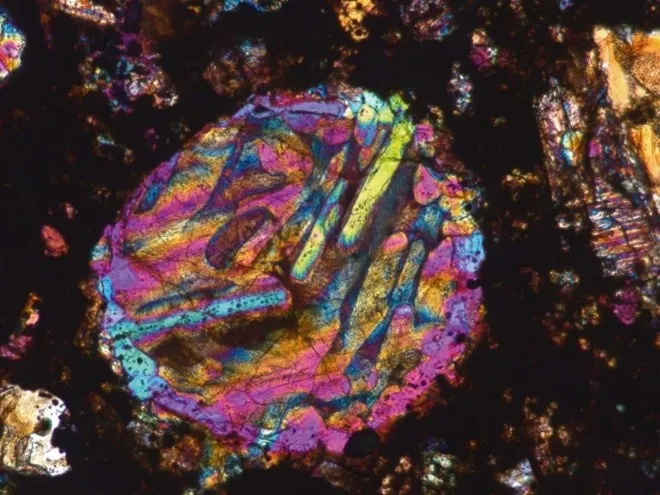
Analytical HPLC Solutions
Instrument and equipment name: High-Performance Liquid Chromatography (HPLC) | |
Model Specifications: Agilent 1200 Series | National manufacturers: United States |
Whatever your liquid chromatography analysis needs are you will find your individual solution within the Agilent LC portfolio. The Agilent 1200 Series is the industry-leading standard, offering everything you need for analytical HPLC methodologies. From routine analysis through new product research and development in chemical analysis and pharmaceutical industries, the Agilent 1200 Series helps you achieve reliable and robust results for all your applications. · Uncompromised data quality for complete confidence in your results · Modular and scalable platform to meet your separation requirements · Easy maintenance and intelligent system monitoring for increased uptime · Scalable and open software architecture · Complete qualification portfolio for highest level of operation | |
Scalable solutions: The broad portfolio of the Agilent 1200 Series offers huge flexibility for conventional analytical HPLC needs. It offers scalable solutions – from a simple isocratic system with manual injection up to fully automated gradient systems – for multiple performance levels, future expandability and adaptability. The modular design ensures that you get the configuration ideally suited to meet your application requirements. An extensive range of detection techniques – including ultraviolet, fluorescence, refractive index, evaporative light scattering and mass spectrometry – gives you the confidence that you can detect everything in your samples.
Type of LC system. 1-Manual isocratic LC system: Workhorse for demanding QA/QC applications: · Industry standard for high performance isocratic LC · Easy and fast maintenance · Flow rates up to 10 mL/min for a wide range of column dimensions and applications · Upgrade options from isocratic up to automated quaternary LC system 2-Automated quatenary LC system: For a wide range of method development and routine gradient applications: · Greatest flexibility for multi-solvent gradients up to 4 solvents · Flow rates up to 10 mL/min support both standard-bore and semipreparative applications · Wide selection of autosamplers for full flexibility in injection volumes and sample containers 3-Automated binary LC system: For research, high-throughput and fast applications: · High pressure mixing for superior gradient performance even at lower flow rates. · Optimized delay volumes for fast chromatography. · Flow rates from 0.05 to 5 mL/min provide ideal support for narrow-bore and standard-bore applications. | |
HPLC Modules: 1-Solvent Preparation · Vacuum Degasser: Flow rate: Up to 10 mL/min – Internal Volume: 12 mL per channel. · Micro Degasser: Flow rate: Up to 5 mL/min – Internal Volume: 1 mL per channel. 2-Solvent Delivery · Isocratic Pump: Flow range: 0.001–10mL/min, for isocratic analysis. · Quatenary Pump: Flow range: 0.001–10mL/min, for gradient analysis (requires degasser). · Binary Pump: Flow range: 0.001–5 mL/min, for fast gradient analysis. 3-Injection Systems · Manuel Injector: Injection range: Loops for 5µL–20mL. · Standard Autosampler: Injection range: 0.1µL–100µL (extendable up to 5000 µL) Sample container: Vials. · High Performance Autosampler: Injection range: 0.1 µL–100 µL (extendable up to 1500 µL) Sample container: Vials and well-plates. 4-Column compartment Thermostatted Column Compartment: Temperature range: 10 degrees below ambient to 80 °C 5-Valves · Internal Valves: (built into column compartment), 2-position/6-port valve, 2-position/10-port valve 6-Detectors · Variable Wavelength Detector for programmable single wavelength analysis, 1 signal, 20 Hz data sampling rate. · Multiple Wavelength Detector for multi-wavelength analysis, 8 signals, 20 Hz data sampling rate. · Diode Array Detector for multi-wavelength and spectral analysis, 8 signals, 20 Hz data sampling rate. · Fluorescence Detector for multi-signal detection with rapid online scanning and spectral data analysis. · Refractive Index Detector for refractive index range: 1.00–1.75 RIU, calibrated. · Evaporative Light Scattering Detector Flow rate: 5 µL/min – 5 mL/min for peak widths of 1 second or larger. | |
Featured Benefits: · Uncompromised data quality: The Agilent 1200 Series represents the generation of LC designed for even greater robustness and reliability with enhanced performance. The seamless integration of each module gives you unparalleled accuracy and precision for both quantitative and qualitative analysis. Highly sensitive detectors deliver the lowest possible detection limits even for the most demanding applications. · Excellent flow and composition precision: · Superior injection precision and lowest carryover: The selection of different autosamplers provides for precision levels of < 0.5 % RSD over an injection volume range from 0.01 µL to 2000 µL. The unique flow-through design, combined with external needle wash and optional multiple wash solvents, virtually eliminates carryover, even for highly adsorptive compounds. · Ultimate UV-visible detection sensitivity: New low-noise flow cells and electronics provide maximum sensitivity and baseline stability. Electronic temperature control ensures baseline stability under fluctuating ambient temperature and humidity conditions. · Unparalleled quality and flexible choices within the ZORBAX LC column family: Maximize system performance and reliability for all your separation needs by combining the Agilent 1200 Series HPLC system with Agilent ZORBAX LC columns and LC supplies. · Robust components: Long-life pistons and seals, together with active seal wash, reduce the frequency of preventive maintenance, Deuterium and xenon lamps with lifetimes of over 2000 hours, Long-life rotor seals require less routine maintenance, thus increasing autosampler uptime and overall lab productivity. | |
Instrument control software: The new Agilent ChemStation facilitates level-5 control of Agilent 1200 Series HPLC and RRLC systems as well as Agilent 6100 Series quadrupole LC/MS systems. • Seamless fit in non- or highly-regulated environments • Easily extendable through built-in macro language • Enhanced workflow support – for example, through new custom fields • Better usability and faster results review • Specific workflow solutions for drug discovery and development • Integration of 3rd party detectors (ESA, CAD, CCIII) • Control of Agilent LC, GC, CE, CE/MS and LC/MS instruments and generic A/D converters.
Agilent 1200 Series Instant Pilot: The Instant Pilot provides enhanced readability with a high resolution, high contrast color display. All chromatographic signals and instrument parameters can be plotted simultaneously on the display using different colors. • Cost-effective, standalone solution for single instrument control • Provides full instrument, method and sequence control and display of online signals | |
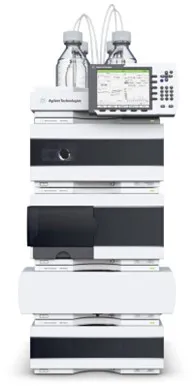
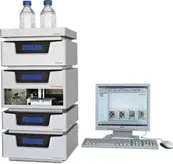
Agilent Gas Chromatography Solutions
Instrument and equipment name: Intuvo 9000 GC System |
The Intuvo 9000 Gas Chromatography (GC) System is designed for fast gas chromatography and high throughput while simplifying your laboratory workflow. Eliminate column maintenance and change columns in less than a minute with Intuvo’s click-and-run connections. Ballistic direct column heating offers faster GC cycle times and improves reproducibility. Intuvo’s built-in intelligence reduces operational and maintenance costs through self-guided diagnostic troubleshooting and early maintenance feedback. Smart Keys identify the exact instrument configuration and column parameters to reduce user error. |
Specifications: · Capillary Flow Technology (CFT): Integrated (backflush, splitter) · Detectors: 2 · Dimensions (WxDxH): 27 cm x 69 cm x 51 cm · Dual Simultaneous Injection: No · GC Detector MDLs: Premium · GC Diagnostics – Leak Check: Autonomous, hands-free · GC/MS Compatibility: Single quadrupole · Triple quadrupole · Inlets: 1 · Maximum Temperature Ramp Rate: 250 °C/min · Operating Temperature Range: +10 °C above ambient to 450 °C · Oven Cool Down 450 °C to 50 °C in less than 3 minutes (22 °C ambient) · Peak Area Repeatability: <1% RSD · Retention Time Repeatability: <0.008% · Typical Pressure Control: 0.001 psi · Valves: 1 |
Features: · Guard Chips prevent column contamination, protecting downstream components and increasing column life · Intuvo no-trim GC columns require no maintenance · Direct heating oven delivers linear and repeatable temperature ramps from 30 °C to 450 °C at 250 °C/min · Ferrule-free, click-and-run connections allow any operator, regardless of experience, to make completely leak-free connections · Innovative flow path provides the ability to configure the GC flow path as needed, making backflush installation simple · Smart ID Keys attached to critical flow path components provide information such as configuration and column age with default parameters for configuration · Intelligent troubleshooting routines diagnose GC system problems by measuring over 100 parameters in real time and provide a step-by-step solution guide in an easy-to-read format · Large touchscreen control with the ability to deliver instrument information wirelessly through secure networks · Uses less than half the power of a conventional GC and can be plugged into any outlet without changing the wiring of the lab · Ideal platform for high-throughput or high-speed gas chromatography with fast heating and cool down · Smaller footprint than most lab GC systems with a similar range of functionality and performance to optimize valuable bench space · Gas Saver, smaller column dimensions, and faster cycle times can result in less helium consumption compared to conventional GC systems · Compatible with Agilent 5977, 7000, and 7010 mass spectrometer systems · Received the independent ACT label that provides information about the environmental impact of the product throughout its life cycle |
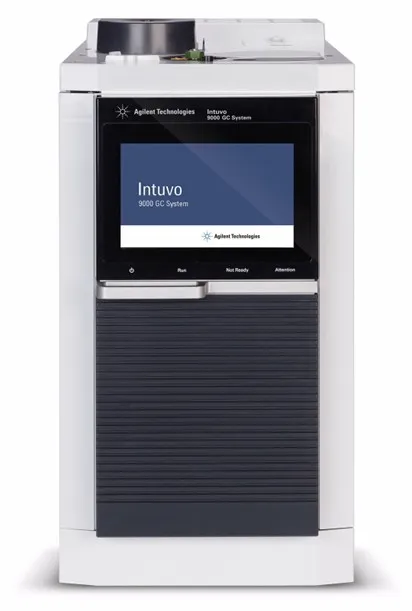
8890 GC System
Instrument and equipment name: 8890 GC System |
The 8890 Gas Chromatograph (GC) System delivers fast and accurate results with flexible configuration capabilities to address specific analysis demands. When accurate results are critical and instrument uptime is a must, this intelligent, high-performance GC consistently exceeds expectations. Built-in intelligence and sixth-generation EPC enable autonomous diagnostics that check GC system health and alert you to potential issues and how to solve them. Step-by-step instructions for common gas chromatograph maintenance procedures are presented on the touch screen or remotely through the GC browser interface. |
Specifications: · Capillary Flow Technology (CFT): Yes (all CFT) · Detectors: 4 · Dimensions (WxDxH): 58 cm x 51 cm x 49 cm · Dual Simultaneous Injection: Yes · GC Detector MDLs: Premium · GC Diagnostics – Leak Check: Autonomous, hands-free · GC/MS Compatibility: Single quadrupole/ Triple quadrupole/ Q-TOF · Inlets: 2 · Maximum Temperature Ramp Rate: 120 °C/min (120 V units are limited to 75 °C/min) · Operating Temperature Range: +4 above ambient to 450 °C -80 to 450 °C (with LN2 cryogenic cooling) -40 to 450 °C (with CO2 cryogenic cooling) · Oven Cool Down: 450 °C to 50 °C in 4.0 minutes (22 °C ambient) 3.5 minutes with oven insert accessory · Peak Area Repeatability : <0.5% RSD · Retention Time Repeatability: <0.008% · Typical Pressure Control: 0.001 psi · Valves: 10 |
Features: · The browser interface provides remote connectivity enabling you to monitor your smart GC system, check system logs, and perform diagnostics tests, from inside or outside the laboratory · The full-function touch screen gives a visual report of the system configuration letting you update the active method, perform maintenance routines, and check GC instrument status · Built-in intelligence autonomously monitors the health of the system, alerts the user of potential issues before they affect chromatographic performance, and offers helpful step-by-step guides to resolve issues · Unique sixth-generation microchannel-based EPC architecture provides a significant improvement in reliability and longevity against gas contaminants such as particulates, water, and oils, extending system uptime and the life of the instrument consumables · Capillary Flow Technology (CFT) modules, which are oven mountable and very low thermal mass, provide unique gas flow connections for multidimensional gas chromatography (GC x GC/Deans Switch), comprehensive two-dimensional gas chromatography (2D-GC) with flow modulation, and backflush at the beginning, middle, or end of an analytical column · Single-filament thermal conductivity detector (TCD) does not require a separate reference gas or manual potentiometer adjustment, yet provides a stable baseline with a minimal amount of signal drift commonly seen with valve switching · Autoranging flame ionization detector (FID) provides the ability to detect and quantitate from percent levels to parts per billion (ppb) in a single GC injection · Compatible with all GC/MS platforms · Sulfur or nitrogen chemiluminescence detector provides low ppb detection, equimolar response, and quantitation for sulfur or nitrogen contaminants without quenching from matrix · Helium conservation module, Gas Saver, and alternative carrier gas solutions can dramatically reduce the amount of helium used, offering flexibility and cost savings · Optional Hydrogen Sensor Module Series 2 detects hydrogen leaks early and shuts off gas flows, continuously monitors status using built-in intelligent diagnostics, and requires calibration only every six months · Optional Smart Keys, included with GC columns, provide information such as column usage with default parameters for configuration that helps automate method setup · The independent ACT label provides information about the environmental impact of the product throughout its life cycle Received the independent ACT label that provides information about the environmental impact of the product throughout its life cycle |
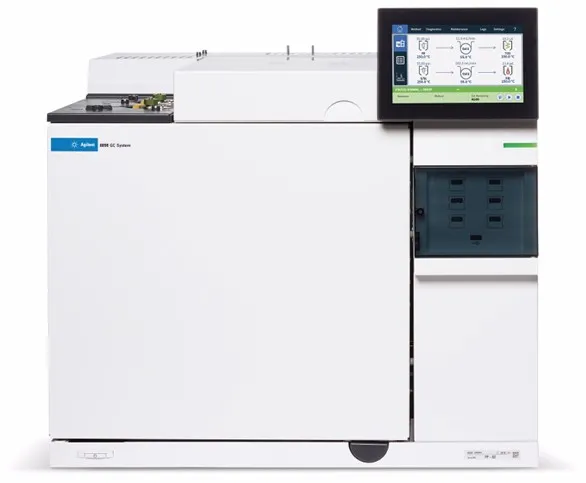
990 Micro GC System
Instrument and equipment name: 990 Micro GC System |
Agilent 990 Micro GC systems provide the answers you need in the compact footprint you want. They combine innovative features with quality and speed that are critical to your gas analysis. Quick, easy startup means you get results in minutes, even if you change measurement locations frequently. Various configuration options offer up to four channels of separation and detection. This versatile GC can be used in the lab, on-line, or in the field, An added benefit is that they use only 10% of the power and carrier gas compared to a conventional lab GC. |
Specifications: · Carrier Gas Type: Helium/ Hydrogen/ Nitrogen/ Argon · Channels: Up to 4 independently controlled channels (injector, carrier gas, column, detector) · Detector: Micromachined TCD, dual-channel (sample and reference) · Injection Range : 1-10 µL with software-selectable injection time · Injection Temperature: Up to 110 °C, including heated sample transfer line · Inlet Connection: 3.2 mm (1/8 in) stainless steel compression fitting · Maximum Inlet Pressure: 100 kPa (14.5 psi) · Oven Temperature: Up to 180 °C, isothermal · Peak Area Repeatability : <0.5% RSD for propane at 1 mol % level for WCOT columns at constant temperature and pressure · Sample Inlet: 1.6 mm (1/16 in) stainless steel Valco fitting with replaceable 5 μm stainless steel filter · TCD Concentration Range: 0.5 ppm to 100% level · TCD Linear Dynamic Range: 105 (0.5 ppm to 5%), propane on a CP-Sil 5 CB channel · Typical Detection Limit : – 0.5 ppm for WCOT capillary columns – 2 ppm for PLOT columns – 10 ppm for Micropacked columns (Hayesep)10 ppm for Micropacked columns (Carboxene) |
Features: · Fast GC analysis of gas samples · Up to 4 channels of separation and detection · Micro-machined thermal conductivity detector · Compact GC has a small footprint to save bench space in the lab or fit in locations outside the lab · Helium, hydrogen, nitrogen, and argon carrier gas options · Wide range of micro GC column phases · Flexibility for lab, out-of-lab, process (in-line / at-line), and field operation · Exchange channels between lab version and mobile version · Inert sample path to address active compounds such as H2S, which can be measured at low ppm levels · Wide range of accessories, sample handling, reporting, and result exporting tools · On-board data handling for out-of-lab or process configurations · Uses only 10% of the power and carrier gas compared to a conventional lab GC · Backflush option can be used to shorten run times and protect the column by preventing exposure to unwanted compounds · Compatible with all GC/MS platforms · Sulfur or nitrogen chemiluminescence detector provides low ppb detection, equimolar response, and quantitation for sulfur or nitrogen contaminants without quenching from matrix · Helium conservation module, Gas Saver, and alternative carrier gas solutions can dramatically reduce the amount of helium used, offering flexibility and cost savings · Optional Hydrogen Sensor Module Series 2 detects hydrogen leaks early and shuts off gas flows, continuously monitors status using built-in intelligent diagnostics, and requires calibration only every six months · Optional Smart Keys, included with GC columns, provide information such as column usage with default parameters for configuration that helps automate method setup · The independent ACT label provides information about the environmental impact of the product throughout its life cycle Received the independent ACT label that provides information about the environmental impact of the product throughout its life cycle |
Applications: · Natural Gas, Exploration, and Refining The 990 Micro GC is used throughout the hydrocarbon value chain. It can determine the composition of natural gas and its energy content (calorific value) according to industry standards set by ISO, ASTM, API, and GPA. It also has been used for fast gas identification and measurement during the mud logging process at drilling sites. Another common application is refinery gas analysis to quickly and accurately characterize gases produced during crude oil refining. · Alternative Energy As the world moves from hydrocarbon-based fuels to alternative energy sources, the Agilent 990 Micro GC is playing a vital role. It can detect and measure hydrogen impurities that can damage fuel cells and has been used to analyze swelling gases in lithium-ion batteries that are used in electric vehicles. It also is used for the fast and efficient analysis of biogas (renewable natural gas) derived from various feedstocks, such as plant material and organic waste from sewage treatment plants or landfills. · Environmental The micro GC is ideal for analyzing air for the presence of pollutants. It has been used to measure BTEX (benzene, toluene, ethylbenzene, and xylenes), which are often used as marker compounds for environmental contamination. It also can determine sulfur dioxide released from industrial manufacturing processes and hydrogen sulfide generated from geothermal hot springs. |
